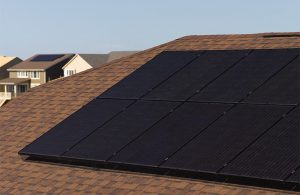What is a Microinverter?

Microinverters vs. String Inverters: What’s the Difference?
String inverters and microinverters are similar because their purpose is the same. However, the primary difference is where they convert solar energy.
A string or central inverter is about the size of a small suitcase or large briefcase—much larger than a microinverter. Usually, the string inverter is installed near your main service panel or electric meter, and it combines one or more strings (an array of modules connected in a series) and converts the total power output from DC to AC.
A string inverter can be simpler than a microinverter system and is often less expensive as well, but it has some drawbacks. For example, if a single solar panel in a string is shaded or damaged, it will reduce the performance of the string. A string inverter can also only monitor the production of a string of panels, not each individual panel.
Alternatively, a microinverter is a small device—about the size of a paperback novel—attached to the back of each solar panel. A microinverter is typically more efficient and durable than a string inverter, which can come with added cost. The benefits and increased reliability of microinverters make them the standard choice of Blue Raven Solar’s expert teams.





